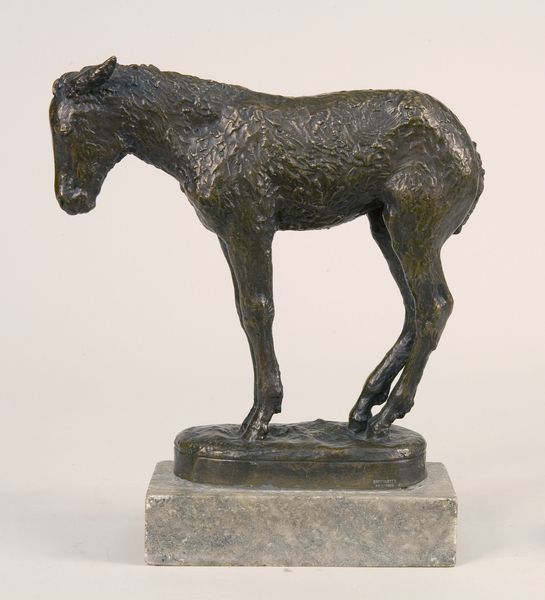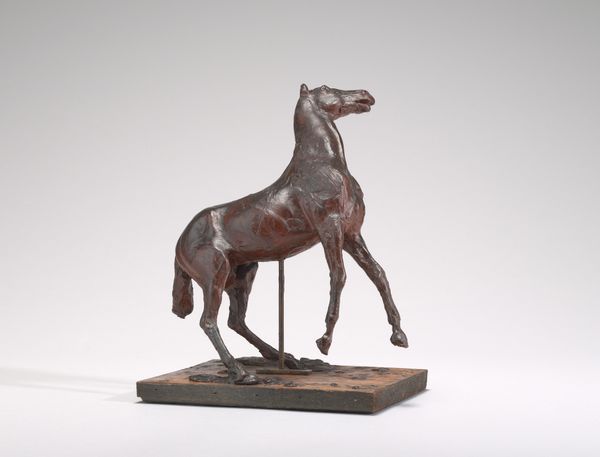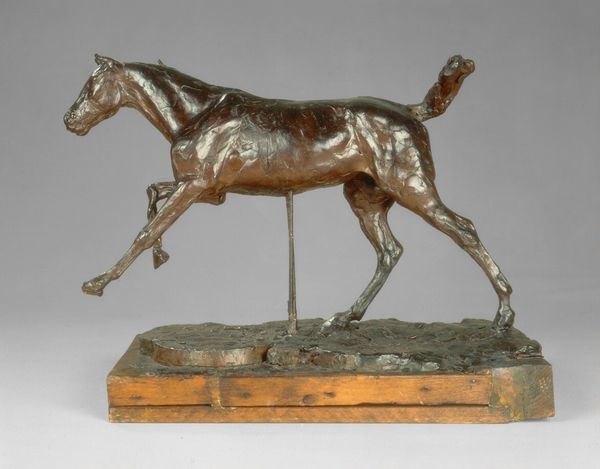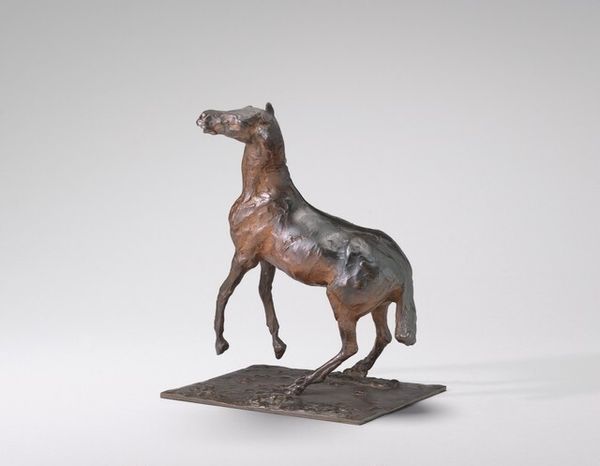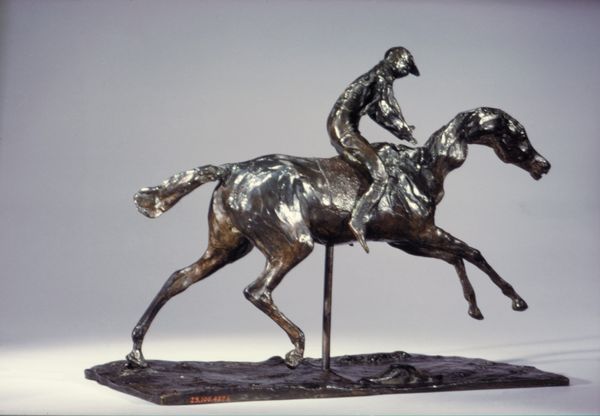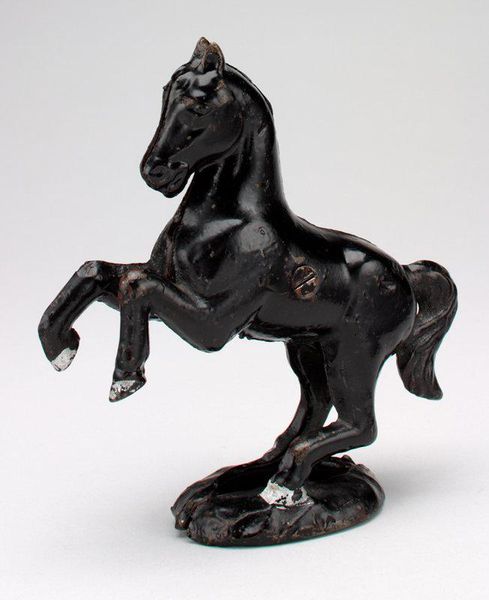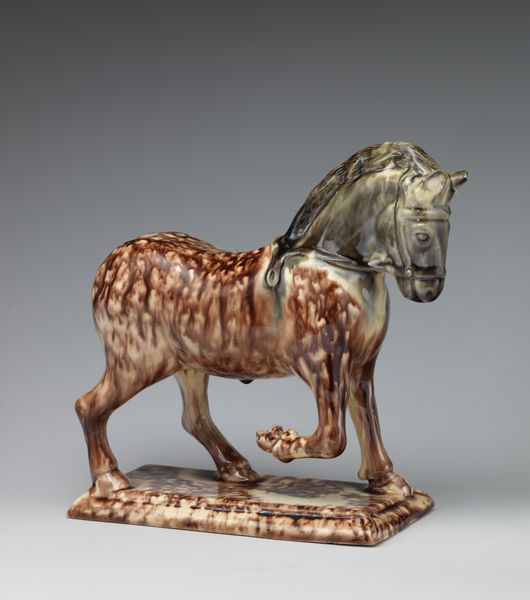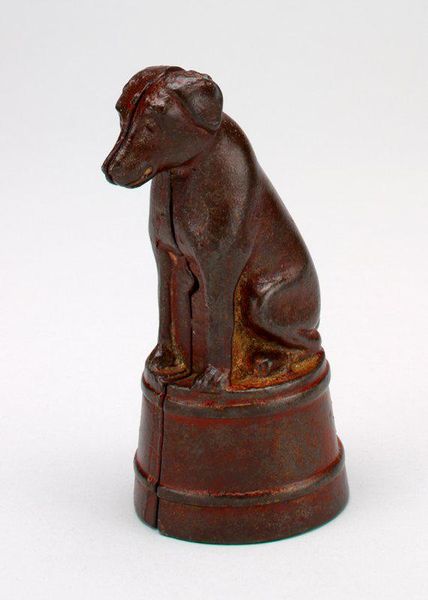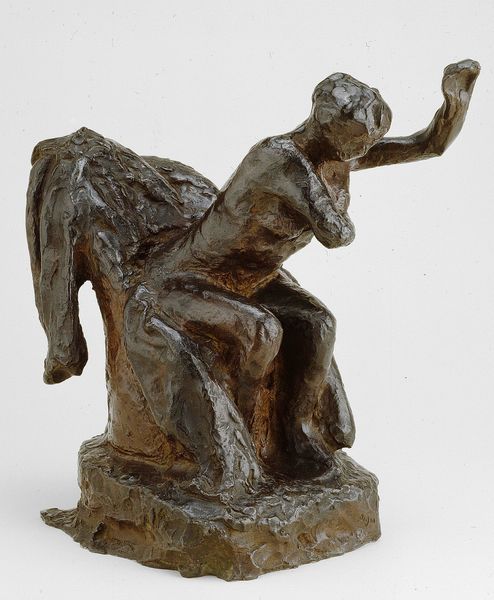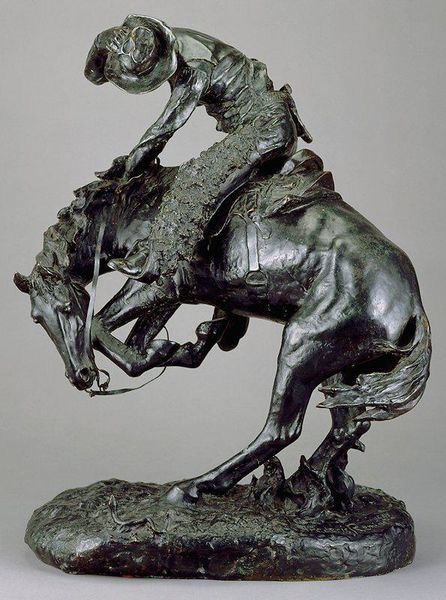
carving, metal, bronze, sculpture, wood
#
carving
#
metal
#
sculpture
#
bronze
#
figuration
#
sculpture
#
wood
#
realism
Dimensions: 4 5/16 x 3 3/16 x 1 5/8 in. (10.95 x 8.1 x 4.13 cm)
Copyright: No Known Copyright
Curator: Looking at this object, my first thought is one of quiet playfulness. It's so small and unassuming, but there's something about the horse's stance that I find rather endearing. Editor: This intriguing piece is simply titled "Horse on Tub." It's a sculpture that the A.C. Williams Company created sometime between 1920 and 1934, and is now held here at the Minneapolis Institute of Art. The sculpture utilizes wood, bronze, and metal carvings to bring the figure to life. Curator: A horse perched atop a tub – there’s a riddle in there somewhere, isn't there? It has this rustic, almost toy-like quality to it. It seems to want to tap into the sentimental feeling of simpler days gone by. Editor: Industrial realism was quite popular then, offering sentimental comfort during social change. Note how the manufacturer reproduced accessible artworks for domestic display—this particular work repurposes equine imagery so evocative of America’s mythology. Curator: So, the horse is standing, confined within the circular frame of the tub, yet its gaze seems fixed elsewhere, and the stance expresses vitality despite its constrained posture. It’s as if the artist is trying to convey longing and a certain dignity despite it being landlocked! Editor: The materiality here is central too. These weren’t conceived as ‘art’ objects necessarily. Items such as "Horse on Tub" provided inexpensive and accessible beauty, as well as reinforced certain values within the family home through decorative culture. Curator: Values indeed, a life tethered! And despite its size, this piece whispers a grand story of freedom denied and of the inner strength to endure. Editor: Ultimately, it reminds us how even mass-produced pieces reflect societal desires and the values deemed worth preserving or even domesticating for daily use. Curator: Yes, there's almost something noble captured in something so tiny, wouldn’t you agree? It’s the humble heroism of finding grandeur in simplicity. Editor: I would certainly agree that the charm and its intriguing accessibility leaves a strong impression to this day.
Comments
No comments
Be the first to comment and join the conversation on the ultimate creative platform.
